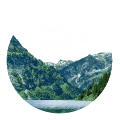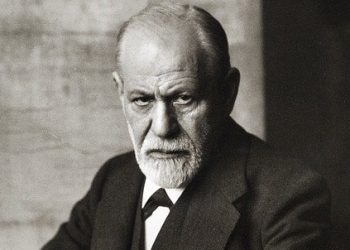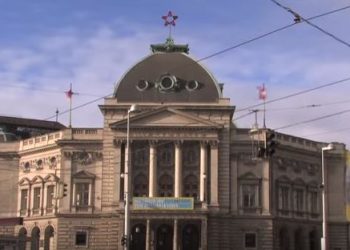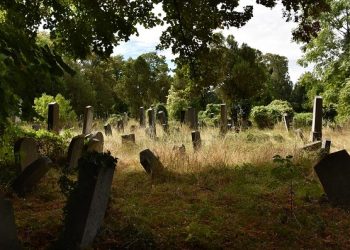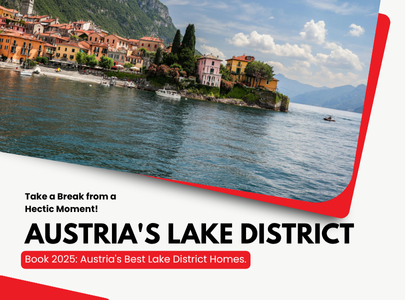The Spanish Riding School in Vienna presents horse shows regularly, and you can visit it as part of a guided tour or to watch the morning training of the wonderful horses.
In this article, we will detail the history of this wonderful school, the special horses that train there, the horses’ dancing methods, the spectacular horse shows (including admission tickets), and the guided tour.
- More information on admission tickets for the morning training at the Riding School.
- More information and prices for tickets to the spectacular horse shows.
The History of the Spanish Riding School
This institution began its official activity during the reign of the House of Habsburg in 1572 after Emperor Charles VI ordered the construction of a magnificent riding and performance center to replace the wooden structure that operated in Josefsplatz square. The main purpose of the riding center was for Habsburg ceremonies, and most of Vienna’s residents did not have the opportunity to watch the wonderful horse shows. Only with the fall of the monarchy did the riding school’s shows open to the general public, and today the spectacular performances can be watched.
For about 440 years, the riding school has been operating and presenting the art of classical riding. This art grew out of the military traditions of educating and training horses for the battlefield. Back in the Middle Ages, during the time of the knights, horsemanship was of paramount importance, and those who knew how to control the sturdy animal in an exemplary manner earned respect and admiration.
The horses that perform at the riding school are not chosen at random; they are noble horses of the Lipizzaner breed, which was specially developed for the House of Habsburg. The origin of this horse breed is the Andalusian horses, which were known for their nobility and beauty. When Spain decided to ban the export of Andalusian horses, the Habsburgs decided to breed their own. The horse breed was developed in the area of the village of Lipica in Slovenia due to its similarity to the Andalusia region, hence the name of the horses – Lipizzan. The uniqueness of this breed is their high physical abilities, the ease with which they can be trained, and of course, their great beauty. Today, the horses are bred in the eastern part of the state of Styria, in the village of Piber.
The Training of Horses and Riders
The Spanish Riding School holds a variety of wonderful performances, the result of 400 years of experience and tradition of classical riding. From a young age, the horses undergo rigorous training to prepare them for the shows, which require delicate movements and exemplary precision in time with the music. The riders themselves also undergo intensive training and are carefully selected after strict auditions.
In the first 3 years, the riders train on trained horses without a saddle or reins to acquire the necessary stability, learn to control the horse, and move with it in perfect coordination. Afterward, they are allowed to control the horse and perform the classical riding movements (called “high school movements”) with it, under the close supervision of an experienced rider. Only after completing this training can the riders receive a young horse and train it for the performances. The training process takes between four and six years. The many years of training make the rider and horse one body, and the combination of the horse’s and rider’s movements with the music is masterful.
Every year, after the strenuous performance season, the horses get a two-month vacation in the summer, and another month and a half during the season, and are transferred to a farm in Lower Austria (a place called Heldenberg) where they rest and enjoy the open spaces.
The Horse Shows at the Riding School
The original shows at the riding school were quite short and included a display of trained horses and classical riding movements. The horses would dance to the sound of music and perform pieces like the Pas de Deux (two horses dancing opposite each other, moving as if they were a reflection of one another).
Today, the show is longer. It begins with a short display of the young horses that have recently arrived from the farm and have begun their training process. They demonstrate the initial stages of the training. Afterward, the mature and trained horses enter the riding arena and perform the masterful movements they have learned.
The experienced riders of the Spanish Riding School often represent Austria in riding competitions around the world, where they showcase the art of classical riding. This is certainly something Austria can be proud of.
A look at the horses and riders:
Today, you can visit the Spanish Riding School and be impressed by the morning training of the horses or watch a full performance and enjoy a wonderful event, just as the Austrian emperors did in days gone by.
Tickets for the Spectacular Horse Shows
The horse shows at the Spanish Riding School are something almost unparalleled in the world. The combination in the show of highly trained horses and riders, impressive classical music, and the world’s largest riding hall is definitely something you won’t want to miss. This is, without a doubt, a classic Viennese experience of the highest level. Tickets for the shows start from €35, but sometimes there are cheaper shows starting from €15. You can book tickets in advance on the official website of the Spanish Riding School or book directly and easily from your mobile.
Guided Tours of the Spanish Riding School
Besides performances, you can visit the riding school as part of a guided tour. On the tour, you can be impressed by the ancient Baroque building, the world’s largest riding arena, and the royal stables in the palace. The tour will teach you about the history, tradition, and the noble horses.
- Tour Duration: 60 minutes
- Tour Times: Tours are held every day, usually at 2:00 PM, 3:00 PM, and 4:00 PM. On certain days, there are also morning tours. You can see the detailed tour schedule in this file here.
- Meeting Point: The tour starts at the visitor center of the Spanish Riding School. Please arrive 5 minutes before the tour begins.
- Tour Costs:
- Adult – from €23
- Student (up to age 27) and Senior – from €19
- Child (6-18) – from €13
- Children aged 3 to 6 can enter for free. It is not possible to enter with children under the age of 3.
You can book tickets in advance on the official website of the Spanish Riding School.
Please note: Photography and recording are strictly forbidden.
The Morning Training of the Lipizzaner Horses
Visiting the riding arena during the horses’ morning training is a wonderful opportunity to see how the horses and riders achieve such a high level of precision and masterful harmony. Accompanied by classical music, the riders and horses perform simple exercises or repetitive training on certain movements to achieve the perfection required for the shows.
It is not possible to book tickets in advance for the morning training. Tickets must be purchased on-site at the visitor center in Michaelerplatz. During the busy summer months, tickets can also be purchased at Josefsplatz.
- Training Times: The morning training takes place almost every day, between 10:00 AM and 12:00 PM.
- Ticket sales at the box office start at 9:50 AM.
- Prices:
- Adult – from €17
- Student (up to age 27) and Senior – from €13
- Child (6-17) – from €11
- There are slightly more expensive tickets if you choose a seating ticket instead of standing.
- Family ticket (2 adults + 1 child between 6-12) – €30. For each additional child, you must pay €4.
Please note: Photography and recording are strictly forbidden.
Essential Information for Visiting the Spanish Riding School
- The entrance to the riding school is from the visitor center (where the ticket offices are also located).
- Official Website
- More information on admission tickets for the morning training at the Riding School.
- More information and prices for tickets to the spectacular horse shows.
How to get to the Spanish Riding School by public transport?
The easiest way to get to the Spanish Riding School is by the underground, which stops at Stephansplatz station. The U1 (red line) and U3 (orange line) underground lines stop at this station. From there, it’s about a 5-minute walk. Another station near the riding school is called Herrengasse (U3 line), and from there, the walk is 6 minutes.
Another option is to walk from the Ringstrasse. You can take tram number 1, 2, 71, or D and get off at the Volkstheater stop. From there, you will have to cross the Hofburg Palace to get to the riding school. The walk is about 7 minutes.
Map:
Address: Michaelerplatz 1

